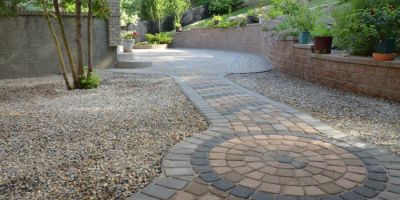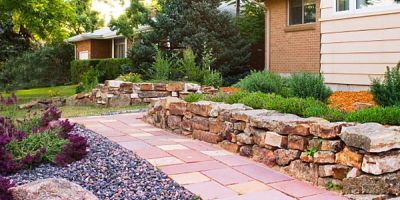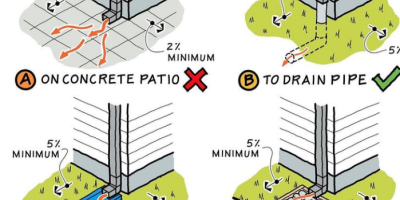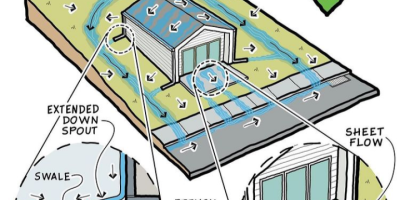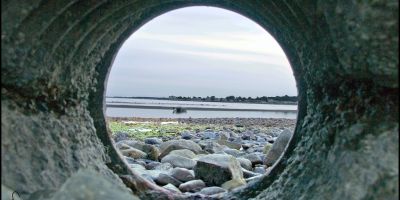EXTERIOR UNDERDRAIN SYSTEMS, Landscape Drainage , Calgary Yard Drainage, Exterior Drainage Contractors near me
Where is the water coming from?
Rain falls. Snow melts. This wetness soaks into the ground area drains landscape or land drainage. In best case scenario, much of this moisture is pulled deeper by gravity it moves below the front line or soil drainage and no standing water in yard. The frost line is the depth beneath which the ground never freezes above the frost line is where the water yard drainage freezing, and this is where we get asked how to fix water drainage problems in yards. Continue reading
Because the seepage is moving below the frost line you should expect water related problems to occur often in late winter/early spring and late fall/early winter.
As the ground water or not standing water in backyard is pulled deeper by gravity it moves sideways following the slope of the surrounding below ground drainage. Yes! Top soil will absorb some water but as the rain continues to fall this layer of topsoil become saturated and water begins to follow the underground to the least resistance of storm water drain.
As the seeping water approaches the basement foundation it enters the area around the basement that was dug up for the construction of the original foundation by the home builder. The soil here is more loosely packed and is often filled with construction debris. The loose soil and debris tend to be mixed during the back-filling process. The problem now is the future homeowner has a perimeter of spongy loosely packed and debris soil pressing on each below grade wall. This spongy earth can hold tremendous quantities of water.
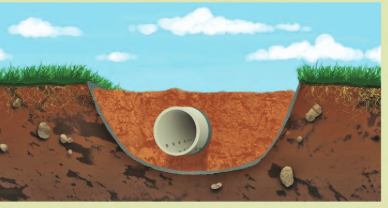
Meanwhile the soil around (5 feet out of the basement wall) is much more solid, usually high clay content. This clay soil is unable to absorb the ground water away fast enough. Now the water – unable to escape – begins to rise around the foundation.
The water pressure tends to force into cracks of the outer layers of wall protection known as parging. Once the water is passed through it is free to enter the foundation and will leak to the inside of the basement or garage.
One of the most leak hints that we see in Calgary homes, and we encourage home owners to look around the walls of the house or garage for white powdery substance. This white substance is left behind on the walls after a damp area dries. It looks like frost and once touched it feels like powder.
Ways to drain water from backyard, an exterior drainage system known as a French drain (Exterior underdrain systems) is installed by the Calgary home builder with washed gravel for outdoor drainage system by the builder. If the landscape drainage system is installed and operating properly, it is designed to pick up the water rising around the foundation and use gravity to drain the water away. Often, we see with those homes that do have yard drain system installed are subject to a variety of problems. The pipe of the drain system is made of terra cotta and is biodegradable- in time they rot away. Depending on the quality of the original pipe, a terra cotta drain can biodegrade in as little as ten years. These French drains are sometimes damaged by crushing during backfilling of the foundation so this pipe may not operate properly from day one. Plant roots and debris can cause clogging and disruption of French drain too. Calgary homeowners! if your house has a French drain it is not guarantee of relief from rising ground water.
Are there any other sources of Dampness?
- Look around your front and back yard.
- Inspect where the water is coming from.
- check neighbour’s yard SLOPE to your yard.
- Negative SLOPE towards CALGARY house DRAINAGE.
Downspouts: Water from roofs is often guided into rain gutters attached under the roof eaves. The gutters lead the water to downspouts. The downspouts may simply guide water down and away from the house allowing the water they carry to spill safely over the ground surface. Be sure the downspouts are installed and water is carried away from the house foundation.
What are your options?
You as a home owner need to know exactly what to do. There may be a number of fairly easy adjustments you can make by yourself. After that, if the problem persists there are only one option.
This Option is for extensive work to be down on the outside of the house.
What are some of the simple steps you can do to your home before you spend money for extensive work?
Visual Inspection
Look carefully around your foundation – floor and walls, remember water always leaves signs of its presence. If can see that your problem is localized, at one or two areas of the foundation, you stand a better chance of success.
Gutters and Downspouts
Check to be sure gutters are clear of fall debris and other material and is flowing freely. Overflowing gutters can spill huge amount of water down next to the foundation.
Look at the downspouts and ensure the exit water is going downhill (even a small slope should do the job) and away from the house. If the interior of the foundation has stains on the wall where the downspout is located, you’ve found a water source. Install Elbows and extensions to your downspouts to take the water further away from the foundation.
How to regrade around foundation
REMEMBER: If you contact a roofer to help you, remember they generally only work from the roof to where the downspouts reach ground level. They will typically not repair underground run off drains. You can spend a lot of money on roof related solutions and do nothing to solve basement dampness and leakage.
Drain Cleaning
If a below grade drain is clogged a rotating snake can be used. Depending on the age and condition of the drain they may help. Remember terra cotta drains slowly rot away. If the drain is over 10 years old the results of this procedure may only be temporary. Debris will resettle in the rotted line – sometimes in just a few months – reclogging it.
REGRADE OUTSIDE
If too much earth has been accumulated near the top of the foundation wall. Water cam soak into wooden portions of the house. In some cases, the excess water can flood through to basement windows or over the top of the wall down into the basement. A major recommendation to inspect for to be at least an 8-inch clearance between the ground and the edge of the basement wall or the top of the foundation wall.
Remember: Remove any chairs or materials such as firewood away from the house wall. Any item stacked ear the wall can conduct water to the interior also another hint they can bring a variety of boring insects like termites.
WHAT ARE SOME THINGS THE HOMEOWNER SHOULD NOT DO?
FLOWING WATER
Don’t try to block water flowing into the basement thru the foundation walls, allow this water to flow freely to keep the pressure on the foundation under control. If water is blocked this may cause an increase of water pressure which in turn can cause structural damage in some cases.
PAINT THE WALLS
Don’t do cosmetic solutions to hide the problem, first fix the problem of the water and then you may paint.
RENOVATE THE BASMENT
Investing money in a basement which shows signs that it is damp or about to leak is a big NO.
EXACTLY WHAT SHOULD YOU DO?
There seems to be a tendency among contractors to oversimplify this question. Maybe its because they are too focused on being the low bidder for your business.
The truth is, if you value your home and want a long-term solution, you would be well advised to error on the side of “overkill” than to accept a “bare bones” approach. (Don’t accept short cuts” … This is not the type of work you as a homeowner will want to do over a second time. And who needs a running battle with a contractor over a solution that failed?
A Good exterior water damage solution should be built like this:
1. Decide on the scope of the job
2. Access and site preparation
3. Remove obstacles
4. Excavation
5. Install drains to collect water and away from the house
6. Gravel is applied
7. Backfill and Tamp
8. Regrade
9. rebuild
10. Replant
For a variety of reasons, be sure to go over every step your contractor is planning very carefully. There is no room for corner cutting on a job like this. You certainly don’t want to do this over a second time.
HINT: Sound repair work begins with a thorough inspection.
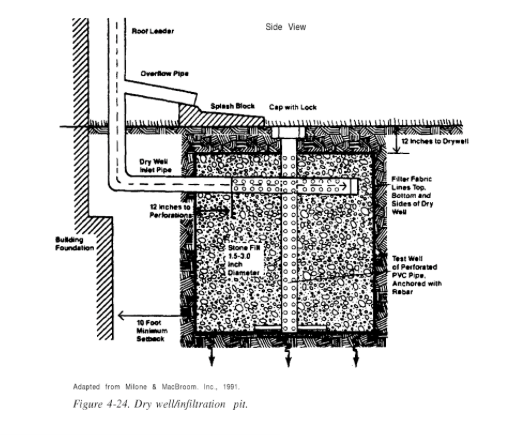
What is the pipe in the window well?
These systems are called Exterior underdrain systems. This system is installed by the home builder before backfilling the foundation of your house. These are reliable drainage collection systems when combined with good foundation parging and waterproofing. It will remove water that would otherwise exert pressure against the foundation walls and floors. Underdrains are normally constructed of continuous perforated plastic pipe laid on a gravel filter bed, with drain holes facing up. The underdrains are placed along the house foundation just below the footing and carry water away from the house to discharge.
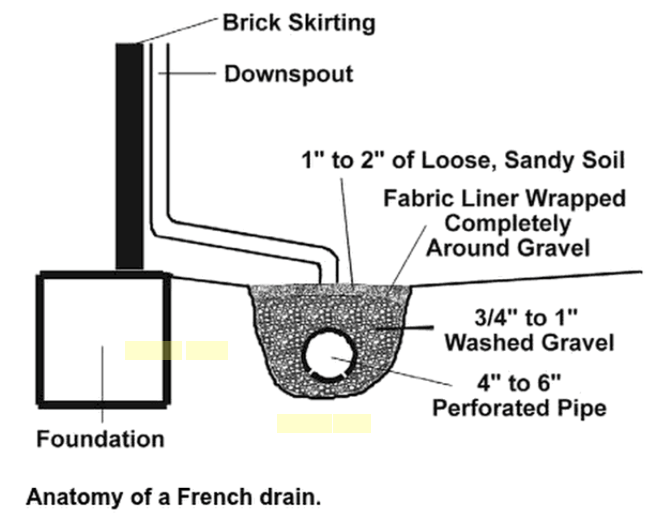
Drainage Best Management Practice using French Drains
A French drain (some call it blind drain) is a type of system that consists of perforated pipe placed in a deep trench that is filled with course rock. The trench is lined with filter fabric and to be extended out to increase its water holding capacity. The water is filtered out to the trench into the surrounding soil.
Dutch drain is like French Drains except that water enter the Dutch drain through a grate at the trench surface instead of from a perforated pipe. Both the French drain and Dutch drains are used to store runoff until it can percolate into the ground.
Keep in mind, the soil surrounding the trench require to permeable, well drained soils, it should be sufficient to provide reasonable rate of infiltration.
Best SOLUTION. To install a catch basin ahead of the drain will help clogging by rock and debris and will store more water.
Dry wells or Roof Downspout systems
Dry wells are pits used to collect rooftop runoff from residential or commercial buildings. Dry wells may be constructed like filtration trenches, using a landscaping fabric covered from all sides of the pit and filled with gravel, or they can consist of an underground perforated concrete tank lined with gravel.
In some cases, several day wells can be installed depending on the scope of the work, and other cases it can incorporate an outlet pipe leading to a drain field.
To understand how water moves out of the soil, let’s start by looking at the exit point.
As the first pipe empties into the exit point, that provides an opening for the next pipe to empty into, and so on. It’s a little like people waiting in line to buy tickets at the movies; the people at the back of the line can’t move forward until the people at the front of the line have gone into the theater. If another ticket window opens, the wait is cut in half. It’s the same in the soil; providing more exit points decrease the time that water must “wait in line” until opening is provided. These exit points could be into a dray well drain system.
Two factors determine the quality of the installed drain system: the effectiveness of the water removal, and how long it will work. System effectiveness is dependent on sufficient number of drains, correct slope and layout, and proper installation. System life is affected by soil and clogging of the pipe, therefore landscaping fabric is used to eliminate any possible soil and gravel is placed around the pipe to act as filtration and hold water.
For new sites, solve drainage problems before they occur. As the first line of defence, build patio correctly, hire a professional to do it for you. Emphasize to the contractor that you require positive drainage, which means that water flows away from your house and doesn’t puddle on paved surfaces. Soil under decks should also have positive drainage, to prevent water from collecting beneath the planks or puddle around posts.
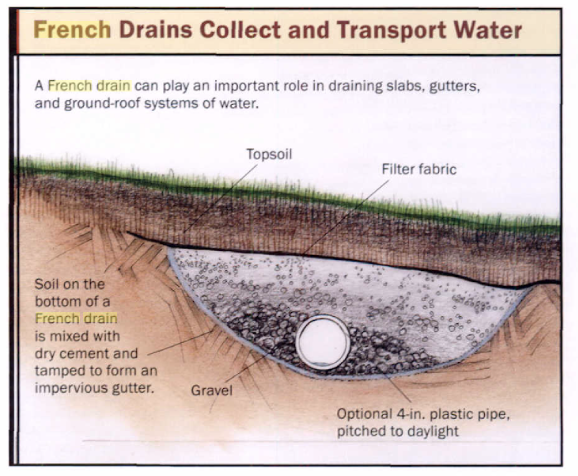
Yard Drainage Design hint:
You can manage the water flow by installing a combination of water-retention systems and water-absorbing features that are strung together to handle larger volumes of water. For example, you might have two connected rain barrels collecting water from guttered roof. The overflow from the second barrel could be directed through a blind drain (French drain) into a small, lined pond. The pond could overflow into a rain garden and then the rain garden overflow could be directed to a grove of trees.
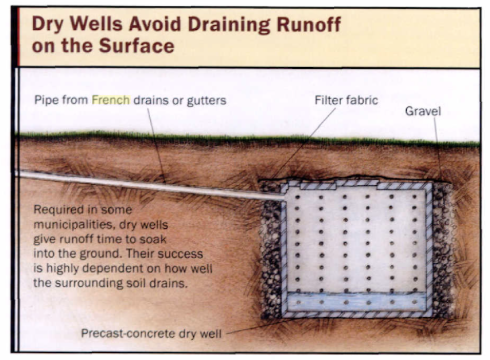
SLOPING FOR DRIANAGE
If you are doing your own landscaping, remember to slope the land so that water will run away from your house. If you are doing a major changes or new landscaping, consider the water drainage near the house and around the site. Design so that water will be most wisely used in your yard – normally to water the plants.
What is the pipe in the window well?
These systems are called Exterior underdrain systems. This system is installed by the home builder before backfilling the foundation of your house. These are reliable drainage collection systems when combined with good foundation parging and waterproofing. It will remove water that would otherwise exert pressure against the foundation walls and floors. Underdrains are normally constructed of continuous perforated plastic pipe laid on a gravel filter bed, with drain holes facing up. The underdrains are placed along the house foundation just below the footing and carry water away from the house to discharge.


